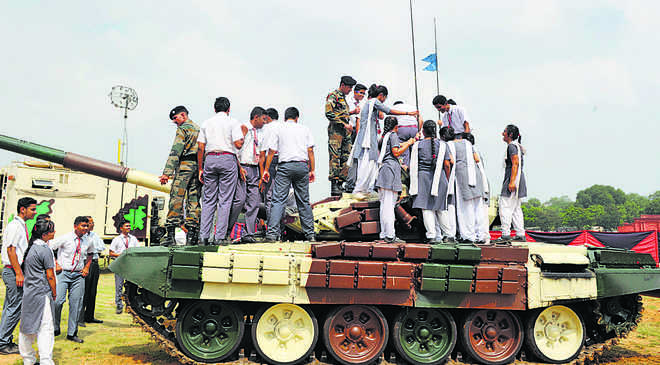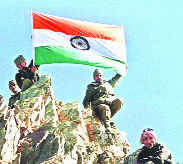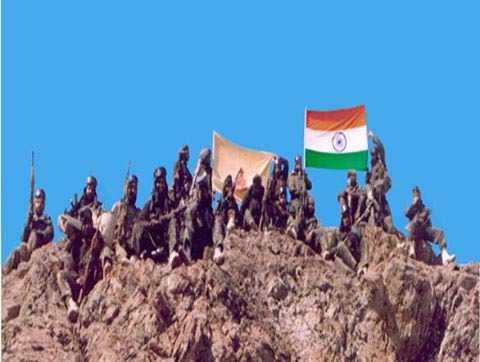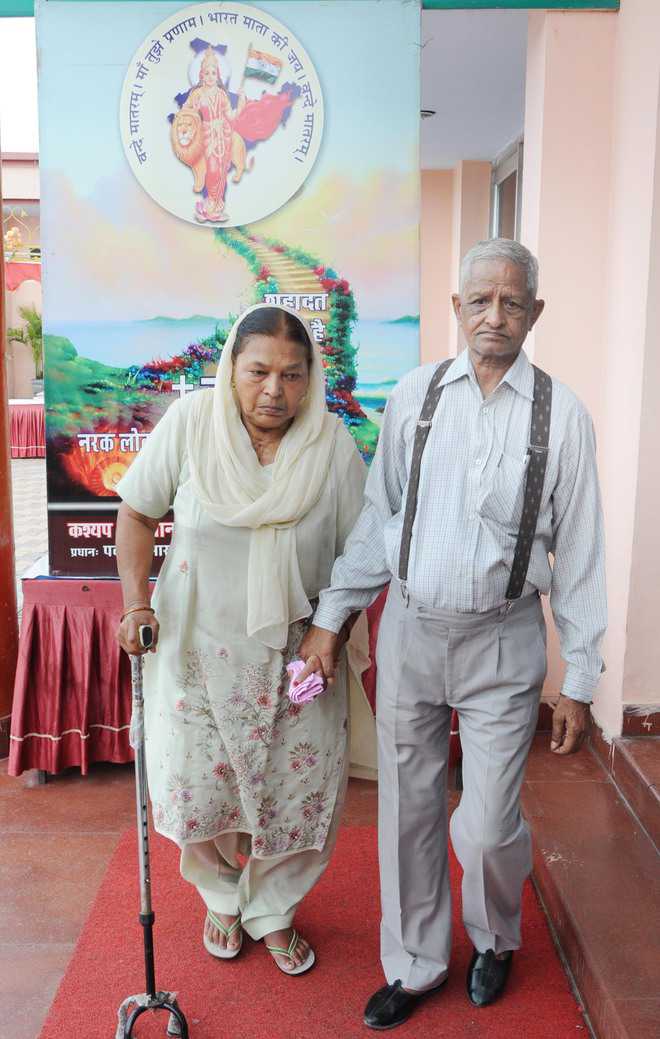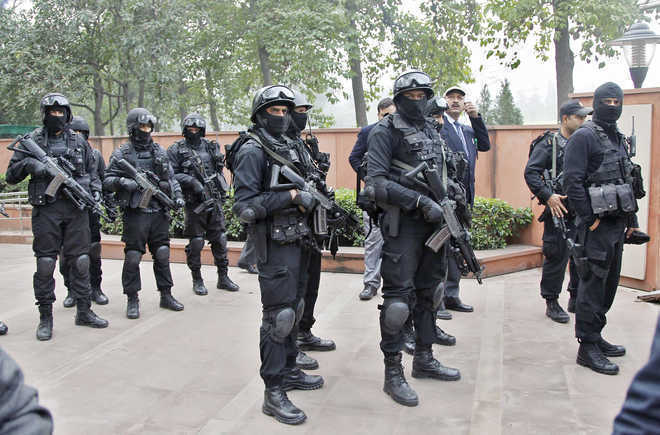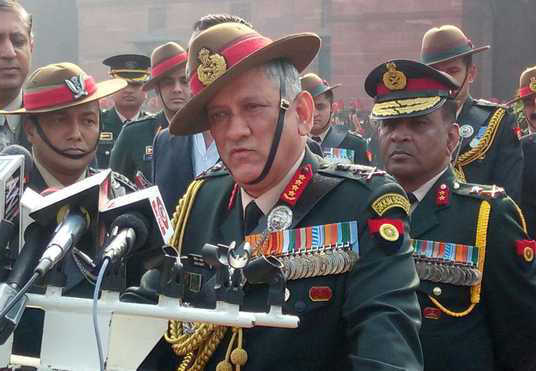Evolving Threat Matrix and Lessons
The recent journey from Pulwama to Balakot heralds’ transformational changes in the evolving geo-strategic canvas, defined by volatility, insecurity, animosity and uncertainty. Balakot marked India shedding its past status quo and strategic inertia on matters of national security and exhibiting strategic autonomy.It demonstrated the nations resolve, decisive political will, potent military capability and clear strategic messaging. Its new normal exhibits certainty of response even in the fog of adversary’s traditional deniability with uncertainty of intensityand medium, irrespective of the strategic restraints. Indeed, India has shed its self-imposed restraint of inviolability of erstwhile sacred spaces, sanctity of minimum force application and self-imposed restraints of strategic red lines. The challenge however lies in sustaining and enhancing these capabilities which could repeatedly be brought to test.Both Balakot and Dhoklam serve as a reminder of the importance of rapidly deployable, ready, relevant and modernised conventional force capability, to counter the present and future threats.
It’s also time to learn our lessons and prepare for the next round, which may be sooner than expected. At the strategic level, firstly, India will have to fight its wars on its own ; thus, the need for intrinsic capability and strategic autonomy, secondly, irrespective of Wuhan Bonhomie the Pak-China tango will prevail, making a two or two and a half front war a reality and finally, till the time we have disputed borders competition and confrontation are same side of the coin leading to conflict situations. Militarily too there are lessons for the future. Firstly, conventional asymmetry will continue to serve both as the primary deterrence and leverage for proxy war, secondly there is adequate space for conventional response , however not withstanding that we need to develop capability to fight dirty , thirdly technology is a critical enabler and IW an important tool, fourthly rapidly deployable mobile, protected, lethal forces will gain ascent and fifthly joint force capability and integrated force application is the future. The key emergent issue in that given our nuclear neighbourhood, if we have to give a decisive military response, we need to enlarge the conventional space. There are two complementary ways of doing it; one strategic deterrence by way of assured massive retaliation policy which is a death knell for Pakistan and cost prohibitive for China, and two by force protection to operate through and fight dirty. The second facet is intrinsic to mechanised forces capability which thus makes them a critical and decisive enabler to achieve our war objectives.
Desired Capabilities of Mechanised Forces
Mechanised Forces will have to be future ready to operate over the entire operational matrix with multi spectrum with multi front capability. Thus, their utility lies in their rapid deployability, multispectral employability and combat overmatch capability to be a decisive force. This translates into the following desired capabilities:-
- Deterrence capability based on medium class contemporary state of art MBTs and ICVs essentially for western front and selectively for Northern front.
- Lighter and versatile light tanks and wheeled ICV for employment in marginal and high-altitude terrain where medium tanks cannot operate.
- Be the driver for combined arms teams which radiate effects in battle for decisive victory in an essentially networked battle space. Thus, their employment must be seen in the context of an enlarged mechanised forces canvas including Attack Helicopters, Self Propelled Arty and Self Propelled Air Defence besides other mobile combat support elements like combat armoured engineers, armoured signals and mobile logistics elements.
- 4GW environment and Hybrid War will mandate high survivability and critical capability to identify the threat, close in, contain and neutralise it. Mechanised Forces as part of a combined arms task force must generate this capability.
- Be the forerunner of indigenous technology induction through a spiral approach and a compeller for tri service synergy.
- Faced by a turbulent nuclear neighbourhood, mechanised forces spearheads must generate the capability to operate under CBRN environment with intrinsic protection capability.
- Meet commitments of out of area contingencies and UN deployment in tune with aspiring national interest.
Force Restructuring and Capability Generation
The Indian Army(IA) coincidently is also at the crossroads of resizing and restructuring as the recent Pulwama flare up comes to the fore. The transformation of the existing force into an a lean, agile, versatile and technology enabled combined arms modular force, is thus exigent and in the right direction. Mechanised Forces with also need to be transformed, modernized and integrated as one intrinsic force capability. The restructuring at Army Headquarter must also be in synergy with the evolving of a larger canvas of mechanised forces, rather than parochial unprofessional individual entities. The message must be top-down of an operationally oriented organizational structure. The force restructuring by way of creating IBGs spearheaded by mechanised forces, more specifically for the Pivot Corps, is yet another critical capability generation facet. Some of the areas of restructuring and organization review are as under:-
- Empowering the reconnaissance capability at unit, brigade and divisional level with a mix of state of art wheeled recce vehicles and light tanks as tracked recce vehicles. Provision of a recce regiment at the armoured division level is presently a critical capability void.
- All holding corps in the developed, semi developed and desert terrain must be rapidised with formation of IBGs. On the northern front IBGs for each sector be structured. The composition of IBGs will of course depend upon the task, threat and terrain considerations.
- Mechanised forces amphibious task force is another capability required for out of area contingencies, protection of our island territories and generation of amphibious operations. Initially dual tasked it could manifest into a centralized reserve with multiple contingencies.
- The infantry units and formations especially of the Strike Corps and IBGs must be reorganized with amphibious NBC protected armoured personnel carrier with minimal additional firepower.
- The armoured divisions and independent brigades must be orbatted with intrinsic attack helicopter(AH) squadrons / flights. State of the art AH fleet with contemporary weapon system, night fighting capability and interoperability with mechanised forces are a pre-requisite. The AH being an aerial arm of maneuver in the third-dimension mandates total integration with mechanised forces in terms of training and operational tasking.
- All artillery with Strike Corps must be self-propelled and with IBGs wheeled. Similarly, armoured signal with mobile EW assets and communication structures, combat engineers with mine clearance equipment on same chassis as frontline forces and matching mobility of logistics must form part of their redefined structures.
- Each armoured division recce regiment and unit recce troops must be equipped with a medium range and short-range UAV troops intrinsic to their structure. Our recce organisations must be restructured to recce and surveillance structures. The Strike Corps SATA units can cater for the long-range surveillance structures and resources. ISR is our weakness in comprehension, integrated structures and equipping.
- Lastly, we must review of the modifications in organization structures of mechanised forces in high altitude as footnotes to the standard organisations.
Modernisation Perspective
Modernisation Focus. The focus must be to maintain combat overmatch through progressive, time critical, prioritised and technology enabled modernisation cum capability development, to prevail in today’s war while building capacities for the future. Future mechanized force modernisation will thus have to build on the principles of retaining the capacity and readiness to accomplish combat overmatch, expand new capabilities to deter and defeat emerging threats, and optimizing force capabilities through a combined arms force application in an essentially joint force application environment. To build and maintain these fundamental capabilities, we must make affordable, sustainable, integrate rapidly evolving mature technologies to avoid obsolescence while investing in military-unique technologies for the future, and cost-effective decisions which provide versatile and tailorable capabilities. The challenging lies in devising a dynamic and innovative modernisation strategy defining the ends, aligning the ways and prioritizing the means all within the existing fiscal realities. The outcome must ensure decisive combat edge across the entire spectrum of conflict. The pillars of such a balanced strategy must rest on five key aspects; sustain current fleet and address voids; upgrade legacy fleet to bridge technological gaps; develop new future capabilities for combat overmatch and induct next generation fleet; replace obsolete and beyond service life equipment progressively; and optimize indigenous capability even if second best.
Modernisation Fundamentals. Mechanised Forces modernisation plans must be based on the foundational edifice of following factors:
(a) Driven by a long term vision & a fleet management perspective which is holistic, realistic and time sensitive. The right balancing of sustenance and modernisation is an important function.
(b) Prioritised and tiered modernisation based on value & vulnerability analysis with judicious scaling to address our operational imperatives. A spiral approach with focus on indigenous solutions must be fostered.
(c) Shift from the erstwhile Iron Triangle of Firepower, Protection and Mob to a more relevant and holistic model of Lethality, Survivability, Agility, sustainability, connectivity and affordability based on commonality of base platform and technology convergence.
(d) Right sizing and balancing the fleet modernisation/upgradation, fleet replacement and fleet expansion, based on realistic fiscal envelop and our operational imperatives, in time and space.
(e) Judicious mix of mature & contemporary technology, based on pragmatic and realistic qualitative requirements. A good mature technology may be more sensible than the immediate chase for state of art technology.
(f) Short evolutionary cycle / time sensitivity is another important factor. “Concept to Product Cycle” must be shorter than the “Technology Cycle”. Also, for upgrades and legacy fleet modernisation, the product to fitment cycle must be compressed with modular form upgrades and field fitments.
Aligning Ends- Ways- Means. The ends are defined as the capacity to accomplish combat overmatch across the entire spectrum of conflict, in an essentially tri-service synergised combined arms battle space. The ways are to balance needs with limited resources so as to align to the operational environment and emerging technologies, innovate for operational payoffs and priorities resources based on value, risk and vulnerability. The means are through a tiered spiral modernisation to improve existing systems, develop new capabilities, bridge technology gaps and balance modernisation with sustenance needs.
Contours of Modernisation Strategy. The art of modernisation will be to balance capability, sustainability, and readiness within the allocated resources to achieve the desired ends. This requires us to build our equipping priorities based on value, vulnerability and risks in temporal terms. The contours of such a strategy will entail:-
(a) Tiered Modernisation. This approach prioritises in terms of progressive capabilities and tiered modernisation while mitigating the risks of low funding reality. The Army must place first priority on formations most operationally critical to be equipped with the best, that is, those facing the greatest risk and providing the maximum payoffs when employed in battle.
(b) Spiral Approach to Technology Induction. Enhanced functional capabilities and increased weapon effectiveness index contributing to combat overmatch must dictate the desired technologies. Many capability gaps can be closed with equipment or technologies that already exist; this will also shorten acquisition timelines, enabling us to buy more often and divesting rather than sustaining some items. Simultaneously develop R & D for state of art technologies for future time critical technology infusion in the midterm. In the long term invest into Science and Technology projects for generation after next disruptive technologies in the long term. This spiral and progressive approach must be based on indigenous solutions needs to be institutionalized.
(c) Risk – Vulnerability Analysis. Risk is a function of the values of threat, consequence, and vulnerability. Prioritized modernisation based on acquisitions adding maximum value to combat effectiveness, mitigating critical vulnerabilities and accepting certain risks in temporal terms. Risk must be assessed in temporal terms and accepted in certain areas to ensure that the more critical areas are added value while mitigating vulnerabilities.
(d) Cost Informed Decisions. Modernisation decisions must be both affordable and cost effective within the overall budget to include life cycle costs. The opportunity cost of “over-spending” to close a specific high cost gap is that we will not be able to afford closing several other gaps; thus, we must make cost informed decisions to manage ‘best bang for the buck’.
(e) Balance Modernisation and Sustenance. Modernisation and sustenance cannot be progressed in compartmentalised mindsets. The fiscal requirements for modernisation must be carefully balanced against the fiscal requirements necessary for sustaining the force at hand in its life cycle. Thus, standardization and commonality of a family of platforms and interoperable technologies will reduce sustenance cost with better inventory management.
(f) Cost Benefit of Sustaining Legacy Equipment. To generate additional resources for modernization, we must accept risk by divesting older systems to decrease sustainment costs; when planning platform replacements and upgrades, assess the economically sustainable life of the current platforms to determine cost benefit of continuing to sustain, upgrade or replace the platform.
(g) Indigenous Solutions to Indian Warfighting. Indigenous capability is a critical contributory factor of strategic autonomy. Thus, modernisation must be based on indigenous capabilities even if marginally lower, and where insufficient then based on a joint collaboration with an Indian firm, ensuring levers in our hand.
Bridging Technology Gaps – A Perspective
Technology Infusion Focus. Technology infusion must ensure :-
(a) Enhanced Survivability in a Hybrid Environment. Multi-tiered and multi -directional protection with counter measures comprising of passive armour, ERA panels and active protection system. They would be based on successful integration of detection avoidance, hit avoidance, active protection systems and advance light weight, high performance armour material along with tank design to survive a hit. Signature management both with passive, active camouflage and stealth technology must find induction.
(b) Enhanced Lethality and Advance Fire control Systems. With improved gun performance, advance optronics, advance Fire Control Systems for first round hit and kill capability empowered by improved lethality ammunitions including multipurpose rounds. Directed Energy Weapons (DEW) and Dazzle Guns are under various stages of development and need to be factored into any future development projects.
(c) Enhanced Agility and Manoeuvrability. Mobility and Agility with higher power to weight ratios, higher power density engines with fuel sufficiency and low heat rejection. Modular variable horse power packs are also a reality today. Improved automatic transmission systems and semi Active/ Active Suspension to permit a stable platform and enhanced cross country speed.
(d) Digitisation and Vetronics. To generate higher situational awareness, network enabled operations and higher inter-operability, vetronics will enhance the overall effectiveness.
(e) Other technologies like advance intelligent power management systems, 3D modelling, AI applications and auto diagnostics must also be pursued.
Tiered Technology Induction Future technology infusion must follow a tiered approach with a long-term vision. All levels are not sequential but simultaneous with user, technologist, defence industry and academia all interfaced in a hand holding model as under:-.
- Level 1 Immediate time critical technology gap be bridged by mature contemporary technology with emphasis on indigenization and integration in the earliest time frame. These components are items for which technologies rapidly change (three to five year cycles) such as sensors, software, and optoelectronics; we want them to be adaptable and reconfigurable across multiple platforms, expansible and linked together to close multiple capability gaps. However, the important issue of power, weight and space management must be addressed prior for modular fit and easy adaptability.
- Level 2 Desired capabilities and emerging technology for next generation AFVs and thus ensure R&D focus on these technologies. These sub system technology changes more slowly (eight to ten years) such as engine upgradation, better gun tube, fire control systems, communications etc; and as such need to be planned during overhaul intervention of AFVs.
- Level 3. Systems which are expensive and where technology changes slowly (fifteen to twenty years) such as active protection systems, new generation engine and transmission or new major capability such as missile firing etc, require to be changed in life extension programmes to bridge technology gaps.
- Level 4. Loop Ahead Technology for Next Generation AFVs (20 years plus perspective) with focus on science and technology projects by academia and Defence R&D.
Concluding Thoughts
Indian Army needs to focus on an integrated force generation matrix in keeping with future threats and desired capabilities. Mechanised forces as part of a combined arms force must get their due in the present force restructuring and capability building, for executing decisive operations over the entire spectrum of conflict. Conventional deterrence thus must be holistically strengthened both for the western and the northern front. Intentions change fast but new capabilities take time.

